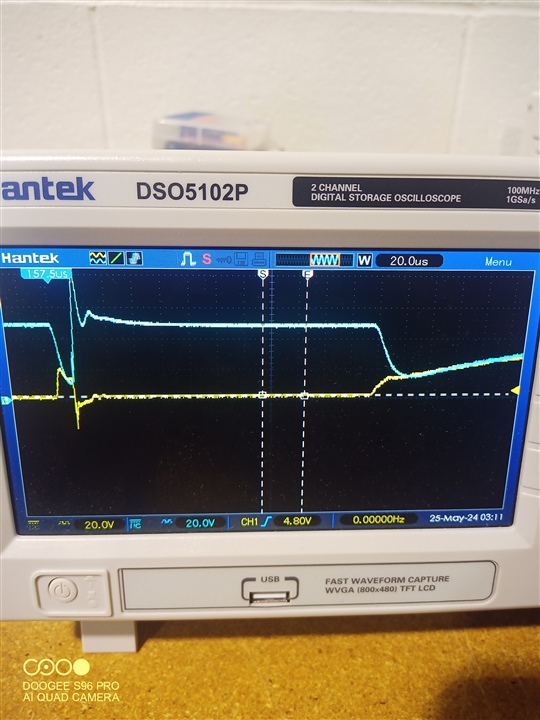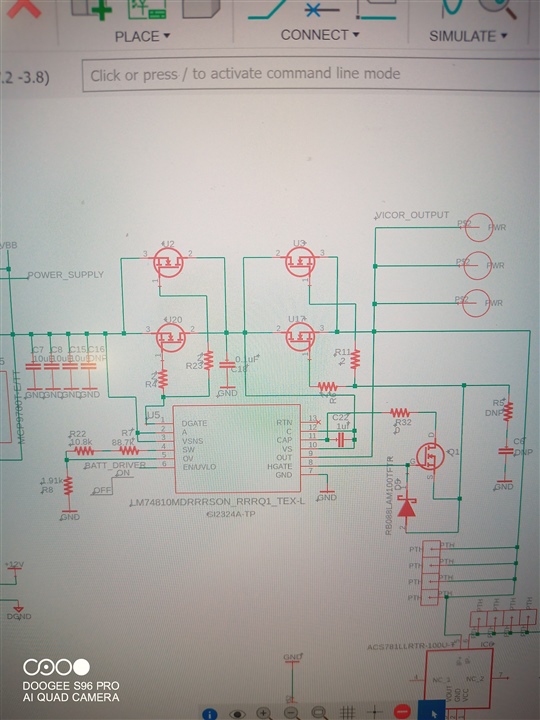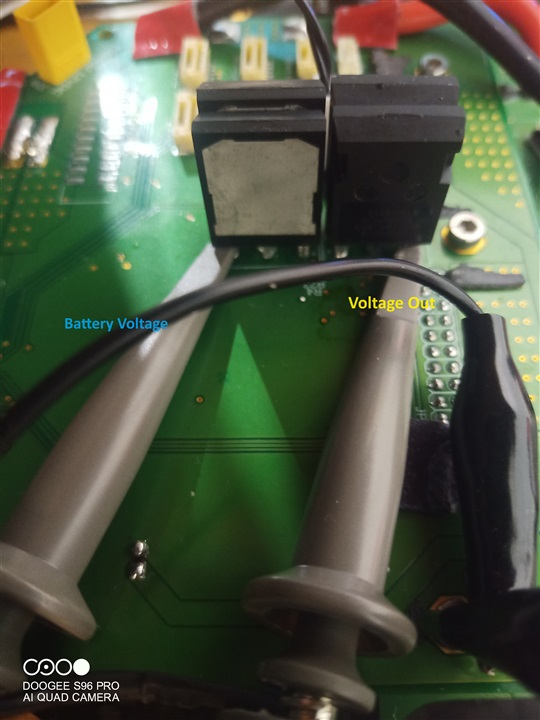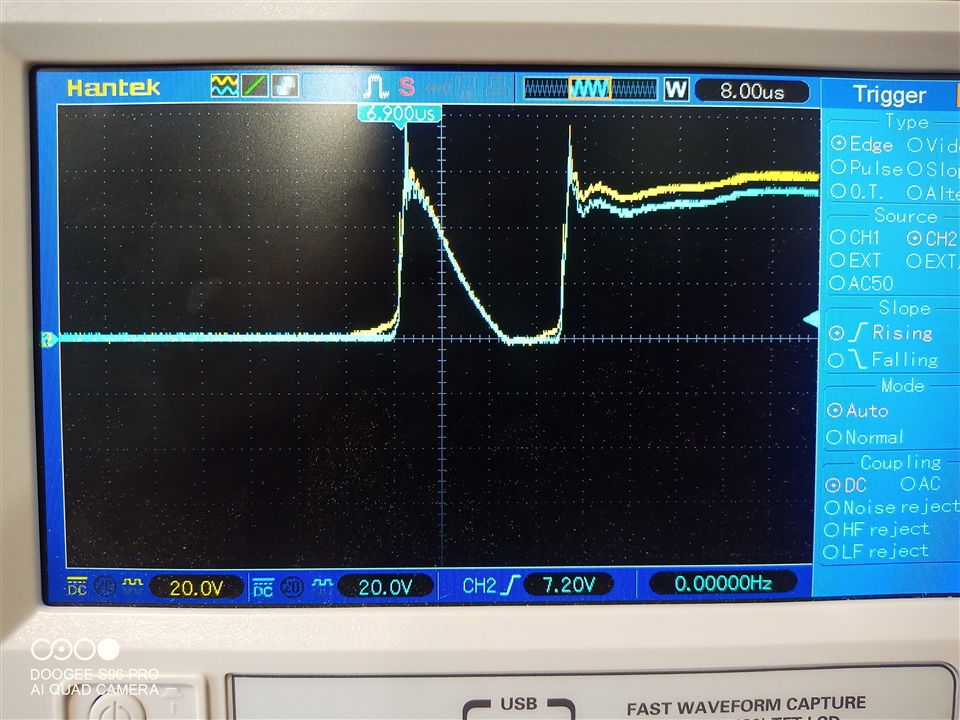Tool/software:

Good Morning -
I am having an issue with the LM7481 circuit on one of my boards. My current set up is as shown in the schematic and images below:



The schematic shows an LM7481 with common drain topology and includes the transistor/diode setup on HGATE to allow for faster FET switching. I am using the LM7481 to switch between main power and battery power. The system needs to charge 4800uF of capacitance on start up to allow the Vicors to come on (they don't start up well into capacitance). On start up of the system, we switch on the battery FETs shown above for 2 seconds to fully charge the capacitors and stabilize, then switch over to Vicor power (another LM7481 setup). This is the output that I get:

(Yellow is the output to the capacitance that is being charge and Blue is the battery/Common drain voltage)
It almost looks like the LM7481 initially turns on which pulls the battery voltage down due to the inrush current to the capacitor, but then abrubtly turns off (where the negative spike on the output and 80V spike on the Battery/drains. After a small settling period, it looks like it tries it again and does what I would expect from it. It switches on in a few microseconds and then has a decent capacitor charging curve that I would expect.
The negative transient on the output makes me nervous and so does the 80V voltage transient. This image is with added parts that are not in the schematic - added a schottky diode on the output to take care of negative transients and a 56V zener diode on the drain to see if that would help the 80V transient. Neither of those additions appear to be helping, but now it is preventing the chip from exploding and then backfeeding into the MCU and taking the MCU out too.
Just looking for direction on how to fix the issue and things to try to get rid of the transients.
Thanks for all the help!!!


